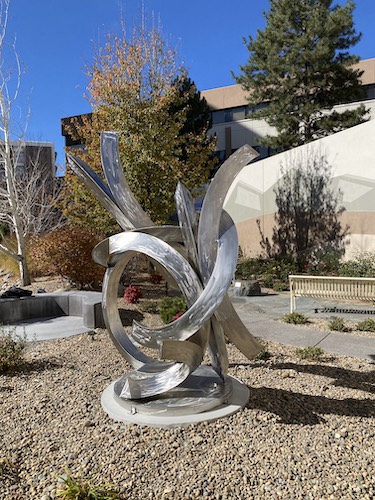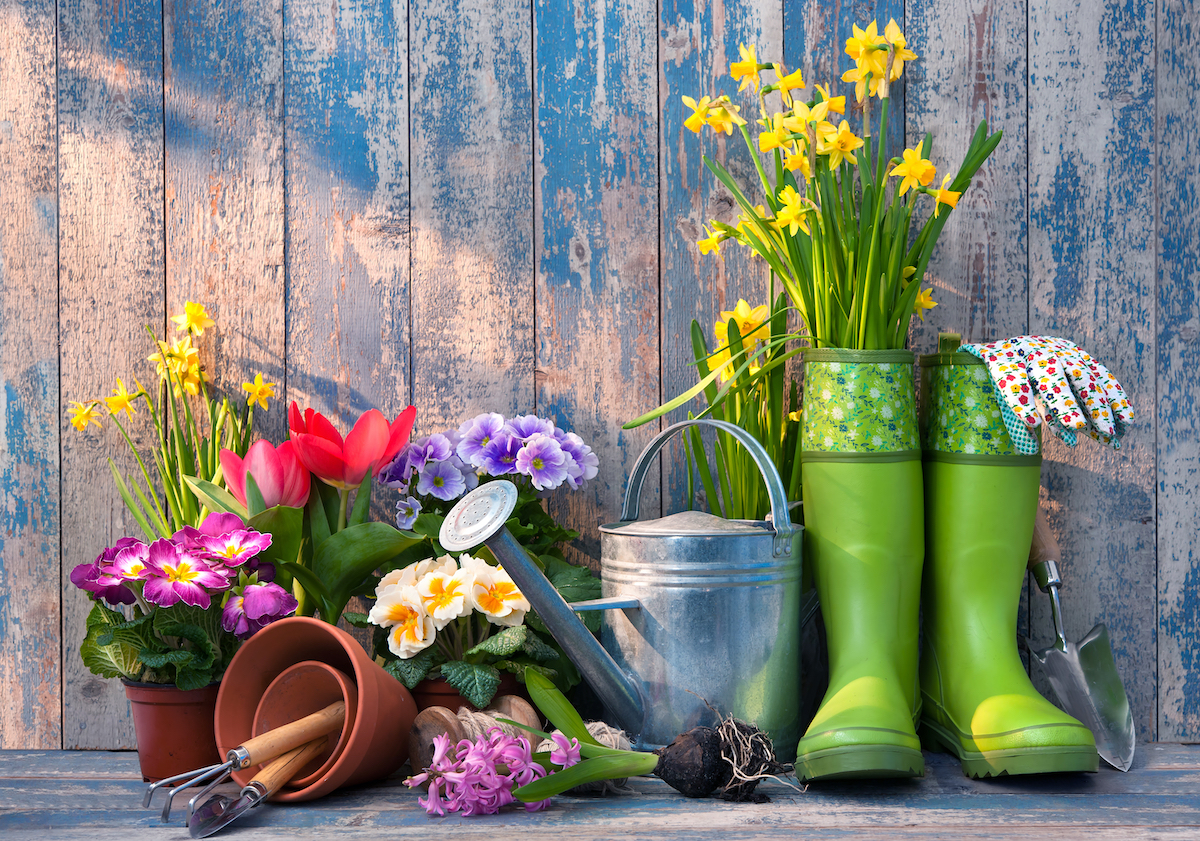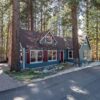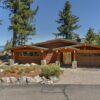If you’d like to try gardening in Reno and Sparks but have questions, this article is for you.
Maybe you’re unsure what fruits and vegetables grow best or how extreme temperatures can affect your plants, or perhaps, you’re searching for learning opportunities in the community. If so, don’t worry. We’ve got you covered.
To help you find success this season and the next, we asked four local experts to share everything you need to know about gardening in Northern Nevada and more:
- Debe Fennell, master gardener and member of the Rotary Club of Reno
- Greta Mestre, long-time Northern Nevada resident and gardening enthusiast
- Steve Packer, horticulture consultant, and plant doctor at Moana Nursery
- Rebecca Dickson, steering committee and chair of Fianna’s Healing Garden
Together, these individuals are committed to nourishing our community—one seed at a time. For expert advice about gardening in Reno and Sparks, keep reading.
Expert Tips And Tricks For Spring Gardening In Reno And Sparks
Before we dive into the complex world of spring gardening in Reno and Sparks, here are a few steps you can take to ensure you’re starting on the right foot:
-
Keep it simple and start small
-
Do your research
-
Prepare and condition your soil by adding organic matter
-
Be consistent with your watering routine
-
Choose a strategic spot for your garden
-
Pay attention to the weather
-
Be aware and mindful of your animal neighbors
-
Attend a gardening workshop
Gardening season is right around the corner. Are you ready?
What steps should a beginner take to start gardening in Reno and Sparks?
Debe says: It’s essential to water during the coolest part of the day (early morning and late afternoon) and avoid getting water on the leaves— it could cause burning. Many gardeners also make the mistake of over-watering in shady places, allowing fungi to grow.
Two ways to know how much water your plants need
- Poke a chopstick down into the dirt to see how far down it goes before it’s dry.
- Don’t be afraid to pick up a leaf and inspect your plants.
Greta says: If you want a lush garden, not a dead one, I suggest automating your watering process. You’ll also want to ensure your containers have good-sized holes to allow proper drainage. To avoid overcrowding, you need to read the labels carefully and account for how large plants will grow. Lastly, choose a strategic spot for your garden where you can enjoy your efforts the most.
View this post on Instagram
Ideas for planning the perfect garden
- If you add flowerpots at your front entry or back patio, it will feel like a tropical paradise of color surrounds you.
- Plant your vegetable garden near the kitchen so you’ll remember to water and harvest your crops.
Steve says: I like to take notes on what I planted every season to know what worked and what didn’t. It is also essential to feed your plants on a regular schedule with organic fertilizer as directed on the label. Plants like to eat too. Before planting vegetables, it is important to condition soil with organic matter, at least 6 to 8 inches deep into the soil.
Growing your gardening skills
What are some of the challenges to gardening in Northern Nevada?
Debe says: Northern Nevada is known for its rapid weather changes, which means it can go from one extreme to another in a few short hours. A sudden temperature change can be pretty damaging to your plants. So, it is crucial to consider all the elements of gardening in Northern Nevada before you start.
Consider these four elements when gardening in Reno or Sparks
- Water
- Soil
- Sun
- Food (Fertilizer)
Greta: Northern Nevada’s growing season is short. With this in mind, choose fruits and vegetables that will produce within 90 days or buy transplants.
Steve says: On average, the last frost occurs during the third week of May. So, if you plan on planting before then, you need to protect your plants by covering them with frost cloth. Also, keep in mind that the weather in Northern Nevada can be unpredictable. But, by mid-June, temperatures will be getting warmer, almost too warm. Last summer, Reno set a new record for the most 100-degree days. So, be sure to have a consistent watering routine too.
What plants grow best in spring?
Debe says: I find that most ground covers do well here, such as saxifrage, candytuft, and the low-growing varieties of Veronica (Speedwell), which are starting to grow beautifully along Riverside Drive. Speedwells are drought tolerant and produce the prettiest, bright-blue color.
For blooms in early spring, you can plant tulips, daffodils, and grape hyacinths in the fall.
As the weather gets warmer, the bleeding heart is one of my favorite shade-loving plants. Hellebores, which have evergreen leaves and rose-like flowers, also do excellent in the shade. Then, if you’re searching for full sun, Shasta daisies, irises, and daylilies are all great choices.
View this post on Instagram
As for vegetables and herbs, I like to plant cilantro, thyme, garlic chive, winter savory, Roma tomatoes, and peppers.
Greta says: The spring season is a great time to plant flowers, shrubs, and trees. But if your irrigation system is off for winter, it’s important to keep a hose handy, or else your plants could suffer from drought. Planting vegetables in the early spring can be tricky due to frost. So, it’s essential to pay attention to extreme temperature fluctuations.
Steve says: Some of the most common vegetables to plant in late spring are snap peas, lettuce, broccoli, cabbage, bok choy, cauliflower, radish, and onions. There are also flowering shrubs and trees that do exceptionally well in Northern Nevada’s high-desert climate.
View this post on Instagram
Before starting your garden, ask these four questions
- What do I want my plants to do? (i.e., provide shade, produce colorful flowers, ground coverage)
- What type of space do I have?
- How much sunlight is there?
What role do animals, insects, and pollinators play in gardening?
Debe says: I have always been fascinated by botany and entomology. So, it’s magical for me to watch the bugs, butterflies, bees, and birds go to work. I suggest getting some red monarda bee balm—it will be a breathtakingly beautiful addition to your garden. Bee balm is excellent for making Earl Grey tea and attracting the best pollinators.
Steve says: The primary pollinators of this region are insects, especially Mason bees, which can pollinate more than other species. You can buy bee kits at Moana Nursery to attract them to your garden. With pollinators in mind, it’s essential to be mindful of what pesticide spray you use because it can be toxic to beneficial insects. So, if you can, always buy organic and spray when the bees aren’t active.
You also must be cautious of the birds, gophers, moles, rabbits, and deer who will love your garden just as much as you do.
View this post on Instagram
Safe and effective ways to protect your garden from animals
- Use predator decoys, such as owls and coyotes, to scare birds and rodents away.
- A deer-proof garden fence should be at least 7 feet tall.
- Make a simple hot pepper spray from cayenne, chili, or jalapeno peppers, which induces a burning sensation when an animal eats or touches it.
Cultivating community, contentment, cheer, and comfort
What are some of the benefits of gardening?
Debe says: One of my earliest memories is my mother asking me to rake the leaves from daffodils at my childhood home in Kentucky. At first, I struggled to hold the large rake in my small 5-year-old hands, but the flowers were thriving after some sun and practice. It was magical. Since then, gardening has become my sanity—all my worries get swept away after working in my garden.
Greta says: The therapeutic benefits of creating and tending to a garden space go far beyond the physical. By growing your garden organically, you no longer have to worry about food quality. Plus, it’s simply healthier for you. Many plant species, such as mint, lavender, chamomile, and hops, are also considered medicinal.
I find it incredibly satisfying to have a garden that produces an abundance of edibles, including flowers, to share with those who need some love, attention, and a baseball-bat-sized zucchini.
Rebecca says: Fianna’s Healing Garden was founded by my mother, Fianna Dickson Combs, who full-heartedly believed in the therapeutic benefits of gardening. As a master gardener, community philanthropist, and extraordinary businesswoman, she had the vision to transform an industrial hospital space into an outdoor, healing sanctuary.
In many ways, gardening represents the cycle of life—with death comes new beginnings. My mother passed away from ovarian cancer in 2008. Her vision was realized soon after, thanks to the love and support of our community. It was a beautiful accumulation of all her life-long passions.

Today, the garden provides comfort and relief to hospital patients, caregivers, family members, and staff. From art structures to birdsong to calming water elements, Fianna’s Healing Garden aims to replace medical concerns and pain with serenity and peace.
Learning opportunities in the community
Where can you learn about gardening in Reno and Sparks?
Debe says: As a long-time member of the Rotary Club of Reno and master gardener, I lead efforts for the Riverside Drive Cleanup and Beautification Project, dedicated to landscape restoration and replanting alongside the downtown riverwalk district. In 2021, I guided a Riverside Drive Garden Tour for community members who wanted to learn more about our beautification project, and I’d love to do something similar this year.
- The Great Community Clean-Up through Keep Truckee Meadows Beautiful (KTMB) is also an excellent way to give back and learn more about the environment. With help from volunteers, we remove about 60 tons of trash and green waste from the Truckee Meadows every year.
- Another way to learn about gardening in Reno and Sparks is through the University of Nevada, Reno, Extension Master Gardener Program. This incredible program allows you to work on various horticulture projects while refining your gardening skills simultaneously.
- To connect with other local gardening enthusiasts, I suggest joining a Facebook group, such as Gardeners and Backyard Farmers of Northern Nevada—it’s an excellent resource for growing food, flowers, and friends.
Greta says: I encourage you always to support local nurseries and farmers in Northern Nevada. They work incredibly hard to provide our community with organically grown plants and trees that will thrive in our high-desert climate.
View this post on Instagram
Rebecca: Without the support of local organizations and donors, Fianna’s Healing Garden would not have been possible. With that said, community members can always get more involved by supporting efforts to bring more spaces like these to Northern Nevada.
Renown’s Acute Rehabilitation Hospital is our next project, which will provide a healing space for rehabilitation patients. Although the project is still in the planning process, we’re looking into getting raised beds for people in wheelchairs so that they can work in the garden. To donate and show your support, you can visit Renown Health Foundation’s website.
Steve: I know it can be overwhelming to know what plants to buy, when to plant them, and how to care for them. There are many helpful resources in the community that will help you have a successful garden. For example, you can visit Moana Nursery’s website for gardening tips, workshops, and more. We also provide expert consultations to answer questions about gardening and specific horticulture issues.



